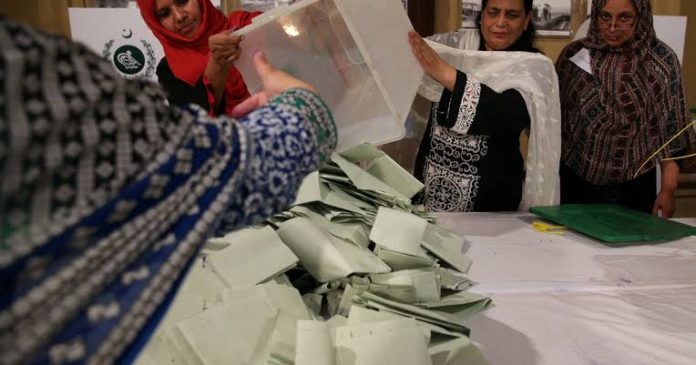Amidst the buzz of Pakistan’s recent general elections, the nation eagerly awaits the unfolding narrative of victory and defeat as the Election Commission of Pakistan (ECP) diligently counts the ballots. With millions of eligible voters exercising their democratic rights, the electoral process has been marked by countrywide internet and mobile shutdowns, sporadic political violence, and a deadly terror attack in Khyber Pakhtunkhwa. As the dust settles and the ballots are tallied, the latest updates on party positions in various assemblies provide a glimpse into the evolving political landscape.
The ongoing counting process is crucial, considering the significant participation of Pakistani youth and women in the elections. It reflects the nation’s commitment to democracy and the determination of its citizens to shape the country’s future through their votes. The electoral journey, despite its challenges, underscores the resilience and resolve of the Pakistani people to uphold democratic values and principles.
With the latest party positions emerging from the ballot count, the political tableau is set for a new chapter in Pakistan’s democratic journey. From the National Assembly to provincial assemblies, each constituency declaration offers insights into the shifting dynamics of Pakistani politics. As parties await the final verdict, anticipation runs high among political stakeholders and citizens alike.
Here’s the latest breakdown of party positions in Pakistan’s various assemblies:
| Party | National Assembly | Punjab Assembly | Sindh Assembly | Balochistan Assembly | KP Assembly |
|---|---|---|---|---|---|
| PPP | 53 | 10 | 83 | 9 | 4 |
| PTI-backed Indep. | 97 | 116 | 11 | 0 | 79 |
| BNP | 2 | 0 | 0 | 2 | 0 |
| PML-N | 73 | 134 | 0 | 9 | 5 |
| MQM-P | 17 | 0 | 27 | 0 | 0 |
| JUI-F | 3 | 0 | 1 | 8 | 8 |
| ANP | 0 | 0 | 0 | 2 | 1 |
| JI | 0 | 0 | 2 | 1 | 3 |
| TLP | 0 | 1 | 0 | 0 | 0 |
| IPP | 2 | 1 | 0 | 0 | 0 |
| Independents | 8 | 23 | 3 | 5 | 7 |
| PML | 3 | 6 | 0 | 0 | 0 |
| Haq Do Tehreek | 1 | 0 | 0 | 1 | 0 |
| BAP | 1 | 0 | 0 | 4 | 0 |
| PKMAP | 1 | 0 | 0 | 2 | 0 |
| NP | 1 | 0 | 0 | 4 | 0 |
| PML-Z | 1 | 1 | 0 | 0 | 0 |
| MWM | 1 | 0 | 0 | 0 | 0 |
| PNAP | 1 | 0 | 0 | 0 | 0 |
| GDA | 0 | 0 | 3 | 0 | 0 |
| JIP | 0 | 0 | 2 | 1 | 3 |
| Rah-E-Haq Party | 0 | 0 | 0 | 1 | 0 |
| BNP-A | 0 | 0 | 0 | 1 | 0 |
| Nat. Dem. Movement | 0 | 0 | 0 | 0 | 1 |
As many as 17,816 independent and party-affiliated candidates contested 265 National Assembly, 296 Punjab Assembly, 130 Sindh Assembly, 113 Khyber Pakhtunkhwa (KP), and 51 Balochistan seats — a total of 855.
The polls, the largest-ever in the country’s history, are pivotal for the country’s uncertain socioeconomic and political future given the dire economy and security situation — and arguably an all-time high political polarisation.
The run-up to the polls saw violence with a significant surge in terrorist attacks, especially in Balochistan and KP.
Apart from the cowardly terrorist attack on police in Dera Ismail Khan (DI) that martyred four police, the polling day witnessed relevant calm with no major violent incident reported from anywhere in the country.
A controversial eleventh-hour action by the government that cast doubts on the transparency, fairness, and freedom of polls was the suspension of mobile and internet services across the country. This move drew heavy fire from the Pakistan Peoples Party (PPP) Chairman Bilawal Bhutto-Zardari, Jamaat-e-Islami Pakistan (JIP) Emir Hafiz N


